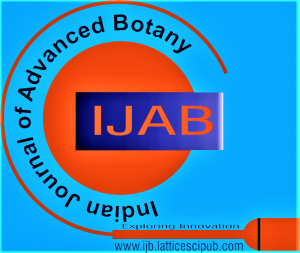![]()
The Threat and Ecological Benefits of Ethiopian Orthodox Tewahdo Church Forests in Ethiopia: A Review Paper
Abesh Birhanu Morka
Abesh Birhanu Morka, Department of Forest and Rangeland Plant Biodiversity, Ethiopian Biodiversity Institute, Assosa Biodiversity Center, Assosa, Ethiopia.
Manuscript received on 14 May 2025 | First Revised Manuscript received on 04 September 2025 | Second Revised Manuscript received on 06 October 2025 | Manuscript Accepted on 15 October 2025 | Manuscript published on 30 October 2025 | PP: 21-28 | Volume-5 Issue-2, October 2025 | Retrieval Number: 100.1/ijb.B105205021025 | DOI: 10.54105/ijab.B1052.05021025
Open Access | Editorial and Publishing Policies | Cite | Zenodo | OJS | Indexing and Abstracting
© The Authors. Published by Lattice Science Publication (LSP). This is an open-access article under the CC-BY-NC-ND license (http://creativecommons.org/licenses/by-nc-nd/4.0/)
Abstract: Ethiopian Orthodox Tewahdo Church Forests have multidimensional functions and uses to mankind and other living organisms. This review paper summarises the benefits and threats of Ethiopian church forests within the boundaries of Ethiopian Orthodox Tewahido Churches. It focuses on biodiversity conservation, emphasising the importance of seeds and seedlings of native vegetation, ecological value, ecosystem services, and benefits to the community and the world in general. The contribution of forests to biodiversity conservation and climate change mitigation is significantly high. However, evidence showed a decrease in forest coverage to produce crops for household consumption. As a result of these factors, the species diversity of natural forests is decreasing. In such difficult conditions, the church forest has been used as a habitat for different plant species. As reported by various scholars, numerous indigenous and IUCN Red List species existed around the church area. In terms of species diversity, the forest around the church is comparable to that of natural forests. In addition to the conservation role of the church forest, the conserved plant species significantly contribute to climate change mitigation through carbon stocks in biomass and soil. Trees in the church area have a long-life history and higher stand structure parameters, such as maximum height, DBH, and crown diameter, and their carbon storage potential is also maximum. Overall, church compounds are serving as hot spot sites for biodiversity conservation and play a significant role in mitigating climate change by limiting greenhouse gas emissions and increasing the amount of carbon removed and stored in forests. It also emphasizes the main threat of these church forests in Ethiopia are deforestation, overgrazing, anthropogenic encroachment, invasive alien species, human population growth and conflict and war. Conservative management of church forests involves protecting them from livestock, managing human use, and actively restoring degraded areas to ensure their longterm health and biodiversity.
Keywords: Ethiopia, Church Forest, Ecological Benefits, Orthodox Tewahido.
Scope of the Article: Plant Biodiversity
